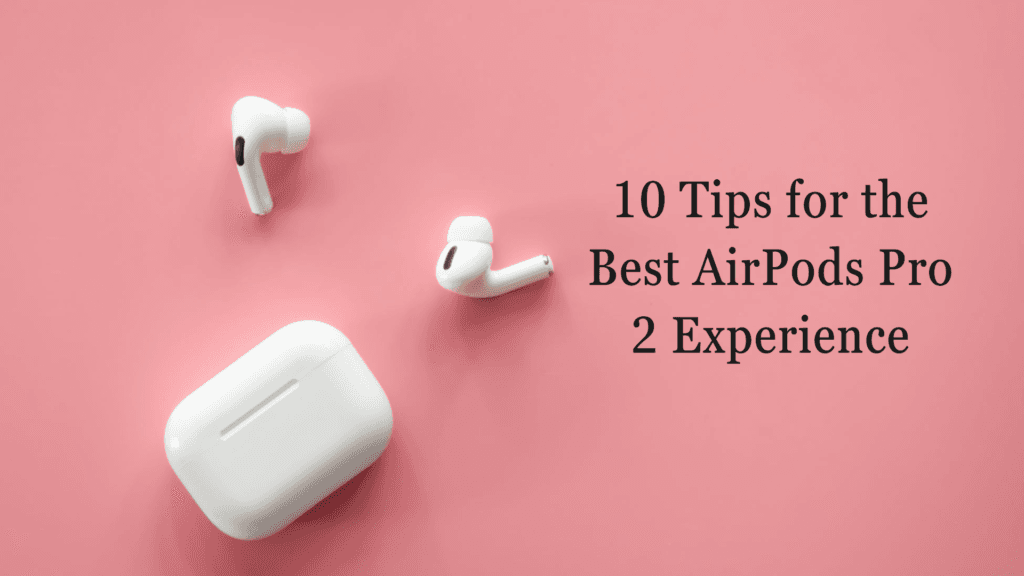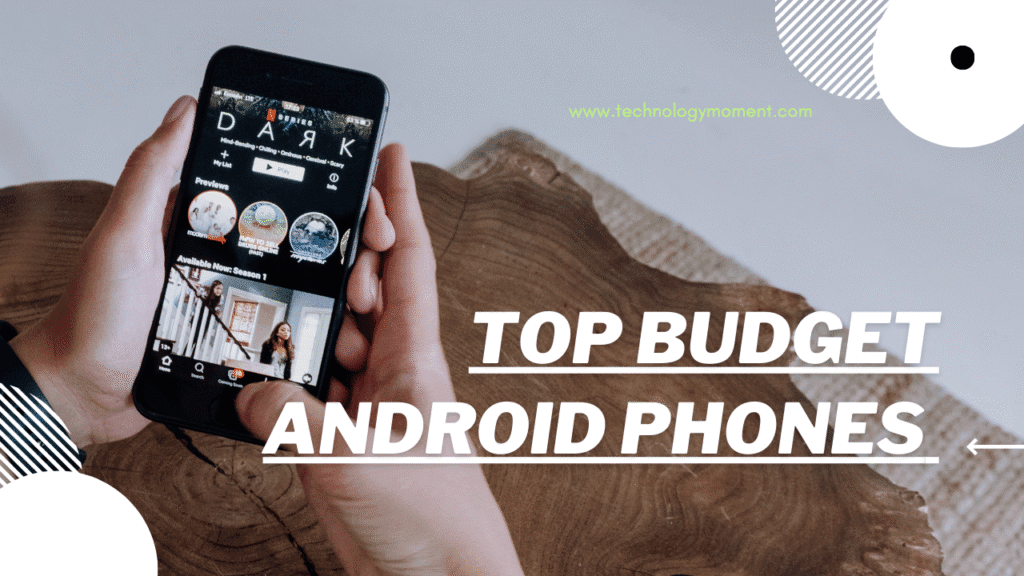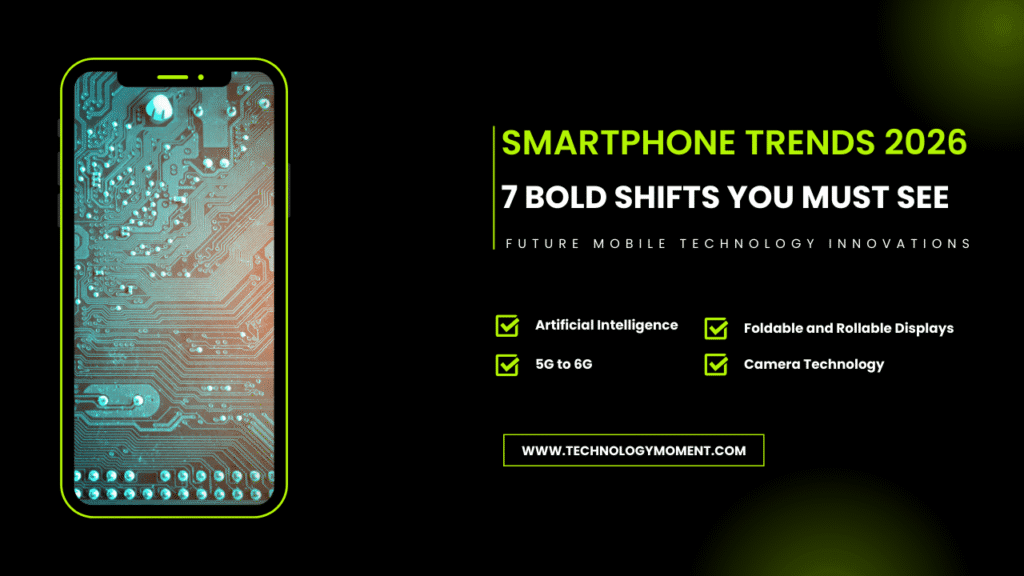
Hey there, tech lover! At Technology Moment, we’re all about exploring the coolest innovations shaping our digital world — and today, we’re diving into something truly futuristic: Foldable Tablet Technology.
Have you ever wished your phone had a bigger screen or your tablet could fit in your pocket? Well, that dream is turning into reality faster than you think. Foldable tablets are changing the game. They blend the power of a laptop, the comfort of a tablet, and the convenience of a smartphone — all in one sleek device.
In this article, “Foldable Tablet Technology: Best Future of Mobile by 2030,” we’ll walk you through everything you need to know about this next big leap in mobile innovation. We’ll explore how foldable screens work, why tech giants are racing to perfect them, and what the future might look like by 2030.
Think of this as your friendly tech chat — simple, smart, and fun. Whether you’re a gadget geek, a curious reader, or just someone who loves staying ahead in tech trends, this guide is for you.
Let’s unfold the story behind foldable tablets and discover why they might just be the future of mobile computing. Ready? Let’s get started!
Table of Contents
The Evolution of Tablets and Mobile Devices
The story of tablets and mobile devices is a journey of creativity, innovation, and convenience. It all began with the dream of replacing bulky computers with something lightweight and portable. Early tablets were simple—flat screens that offered limited power and basic functions like web browsing or reading. Yet, they opened the door to a new era of mobile computing.
As technology advanced, smartphones started stealing the spotlight. Their compact design and touch capabilities made them the go-to device for millions. But users still craved a bigger screen for watching videos, designing, or doing office work. That’s when tablets became mainstream, offering a balance between mobility and screen size.
Over the years, brands like Apple, Samsung, and Lenovo pushed tablet design beyond imagination. They improved displays, processors, and battery life. However, one problem remained—portability versus productivity. A large tablet was great for work but hard to carry, while small ones lacked screen space.
The tech world needed something smarter. Something that could fold when you want portability and unfold when you need a full-size screen. This idea sparked the birth of foldable tablet technology—a true game-changer for the mobile industry.
Understanding Foldable Tablet Technology
So, what exactly is foldable tablet technology? Think of it as the fusion of a smartphone’s flexibility and a laptop’s productivity. These devices use flexible OLED (Organic Light Emitting Diode) displays that can bend or fold without breaking. The key is in the design—screens that stretch across a hinge, allowing the device to open like a book or fold into a compact form.
This is not just a design gimmick—it’s a revolution in usability. When folded, it feels like a regular phone or mini-tablet. When unfolded, it transforms into a large display for gaming, streaming, or multitasking.
Foldable tablets are more than just cool tech toys. They represent the next phase of mobile evolution, where one device can replace multiple gadgets. You can watch a movie, take notes, or edit photos—all on the same screen.
The technology behind them is fascinating. Engineers developed ultra-thin glass and flexible polymers that can handle thousands of folds without losing clarity. Smart hinges ensure smooth folding without leaving ugly creases. Combined with AI-based software optimization, foldable tablets adapt their interface as you fold or unfold the screen, offering a seamless experience every time.
How Foldable Tablets Work
The science behind foldable tablets might sound complex, but let’s break it down simply. The heart of every foldable device is its flexible display. Traditional screens use glass layers that are rigid, but foldable screens use ultra-thin glass or plastic substrates that can bend like paper.
These displays rely on OLED technology, which lights up each pixel individually. Because there’s no need for a thick backlight, the screen becomes thinner and more flexible.
But the real magic happens in the hinge mechanism. It’s the backbone of the device. The hinge allows smooth folding while protecting delicate display layers from stress. Some brands even add special fibers or micro gears to reduce pressure on the fold line.
Powering all this flexibility are custom batteries, designed in sections. Instead of one big battery, foldable tablets have two smaller ones placed on either side of the hinge. This keeps the balance perfect and ensures long battery life.
Even the motherboard and cooling systems are re-engineered to be flexible or split in two. Every piece, from camera modules to speakers, works in harmony to maintain performance whether the device is folded or flat.
In short, foldable tablets work like magic—but it’s all science, innovation, and years of engineering brilliance behind that smooth folding screen.
Major Brands Leading the Foldable Revolution
The global race to dominate foldable tablet technology is heating up, and several brands are at the forefront of this innovation curve.
Samsung took the first big leap with its Galaxy Z Fold series, showing the world that foldables can be both powerful and practical. The Z Fold lineup continues to improve with stronger hinges, brighter displays, and more efficient multitasking modes.
Huawei followed with its Mate X series, offering an elegant outward-folding design. It proved that foldable devices could look futuristic while staying functional. Huawei also focused on improving battery performance and camera quality—two critical areas for global users.
Lenovo impressed the tech community with the ThinkPad X1 Fold, the first foldable laptop-tablet hybrid. It gave professionals the flexibility to work anywhere, anytime, with a device that fits in a small bag.
Microsoft entered the scene with the Surface Duo, merging productivity tools from Windows with the simplicity of Android. It may not be a full tablet, but it paved the way for dual-screen innovation.
Other players like Oppo, Xiaomi, and Google are also investing heavily in foldable display research. By 2030, experts predict that nearly every major tech company will offer some form of foldable or rollable smart device.
Advantages of Foldable Tablets
Foldable tablets bring a wave of benefits that go beyond aesthetics. The most obvious one is flexibility. You get a compact device when folded and a large screen when unfolded—ideal for travel, work, or entertainment.
They also redefine multitasking. Imagine checking emails on one side of the screen while attending a video call on the other. Foldable tablets make this possible without switching apps or losing focus.
For creative users, these devices are pure joy. Designers, artists, and video editors can use styluses on larger screens with better precision. Students and professionals can split screens for note-taking or presentations effortlessly.
Another huge advantage is portability. Foldable tablets replace multiple devices—no need to carry a separate phone, tablet, and laptop. It saves space, reduces clutter, and supports a minimalist lifestyle.
On top of that, foldable technology promotes eco-friendliness. Instead of producing several devices, one flexible tablet can serve multiple purposes, reducing electronic waste over time.
Lastly, let’s not ignore the entertainment factor. Watching movies, playing games, or scrolling through photos feels cinematic on these wide, immersive screens. They deliver a viewing experience that traditional tablets can’t match.
Challenges in Foldable Tablet Development
Let’s be honest — making a foldable tablet isn’t a walk in the park. It’s a perfect blend of art, science, and endless engineering challenges. One of the biggest hurdles is screen durability. These devices bend thousands of times throughout their lifetime, so the display must stay smooth and crease-free. Manufacturers use ultra-thin glass or polymer layers, but achieving both flexibility and strength is tricky. A small crack or crease can easily ruin the display’s performance.
Another big challenge is cost. The technology behind flexible OLED panels and hinge systems isn’t cheap. That’s why foldable tablets often come with a premium price tag, keeping them out of reach for many users. As production scales up and materials become more affordable, prices are expected to drop, but for now, affordability remains a concern.
Software optimization is another mountain to climb. Apps and operating systems must adapt fluidly between folded and unfolded modes. Imagine watching a video in tablet mode and folding it mid-way — the interface must adjust instantly without lag or layout errors. Developers are constantly improving this transition experience to make foldables more user-friendly.
Finally, there’s the market acceptance factor. Many people still hesitate to invest in foldable devices because they worry about longevity or repair costs. To build trust, brands must offer better warranties, repair options, and user education. Foldables are futuristic, but they still need to earn everyday users’ confidence.
Foldable Tablets vs Traditional Tablets
If you’ve used a traditional tablet before, you already know its strengths — big screens, easy navigation, and strong app support. But foldable tablets take things up several notches. They’re like two worlds merged into one — the portability of a phone with the screen power of a laptop.
The most noticeable difference is display versatility. Traditional tablets have fixed screens, while foldable ones can expand into larger displays or shrink down to fit in your hand. This flexibility means more comfort whether you’re working, streaming, or gaming.
In terms of performance, foldables often pack similar or better hardware than regular tablets. But here’s the catch — their complex design makes them slightly heavier and more delicate. Meanwhile, traditional tablets win in durability and affordability. They’re simpler, cheaper, and easier to repair.
The biggest advantage of foldables is multitasking. You can open multiple apps side-by-side, drag and drop files, or take notes while watching a lecture — all on one dynamic screen. On the other hand, traditional tablets still feel more reliable for long-term use.
In short, if you value innovation and flexibility, foldable tablets are your future. But if you prefer simplicity and stability, traditional tablets still hold their ground.
Role of AI and Cloud in Foldable Devices
Artificial Intelligence (AI) and Cloud technology are quietly powering the brains of foldable tablets. Think of AI as the smart assistant that learns your habits and adapts the device accordingly. It automatically adjusts brightness, screen layout, and even suggests multitasking setups when you unfold the device. AI makes foldables feel alive — intuitive and responsive to your needs.
Now, add cloud computing to the mix. With cloud support, you can start a document on your foldable tablet and finish it on your laptop — no cables or storage hassles. The cloud also ensures you never lose data, even if your device is folded, broken, or replaced.
AI and the cloud together make foldables more productive and seamless. Imagine your tablet automatically syncing all your creative projects, analyzing your work habits, and optimizing battery use — that’s the future of intelligent mobility. As foldables evolve, their dependence on AI-driven optimization and cloud-based collaboration will only grow stronger.
Foldable Tablets in Business and Education
Foldable tablets aren’t just tech toys — they’re transforming the way people work and learn. In business, they’re a game changer for remote work and digital meetings. You can fold the tablet for calls and unfold it into a full workspace when you need to multitask. Presentations, video calls, and spreadsheets all fit in one sleek device.
For students and educators, foldables make virtual learning more interactive. A folded tablet can act as a notebook for writing or sketching, while the unfolded mode becomes a digital whiteboard or reading pad. It’s like having multiple gadgets in one, perfect for blended learning environments.
Creative professionals also love the flexibility. Designers can sketch with precision, writers can split screens for research and drafting, and video editors can edit comfortably on the go. The smooth transition between modes supports productivity and creativity like never before.
By 2030, foldable tablets will likely become essential tools in classrooms and offices worldwide, bridging the gap between creativity and efficiency.
The Future of Foldable Tablet Technology by 2030
Fast forward to 2030 — the future looks bright and incredibly flexible. Foldable tablets will evolve from cool gadgets to mainstream must-haves. Expect roll-up and stretchable displays, where you can literally pull the screen to expand it. Imagine a tablet that fits in your pocket but unfolds into a 17-inch display for gaming or design work.
The hardware will be lighter, stronger, and more energy-efficient. Battery technology will catch up too, offering fast charging and long-lasting performance. With the rise of 5G and AI, foldables will deliver real-time translation, AR/VR integration, and ultra-smooth multitasking.
Environmental sustainability will also take center stage. Brands are expected to use recyclable materials and eco-friendly production methods. Foldables could replace multiple devices, reducing electronic waste and promoting a greener tech culture.
Most importantly, foldable tablets will bridge the gap between mobiles and laptops. They’ll redefine how we connect, learn, and work, turning science fiction into daily reality. By 2030, your tablet might not just fold — it might flex, stretch, or roll like paper.
Impact on the Mobile Industry
The rise of foldable tablet technology is shaking up the entire mobile industry. We’re not just talking about a new gadget; we’re talking about a major shift in how people use and think about mobile devices. Foldable tablets are slowly closing the gap between smartphones, tablets, and laptops.
Imagine a single device that unfolds into a large workspace for productivity, yet folds neatly into your hand when you’re done. This isn’t a dream—it’s the direction the mobile world is heading by 2030. Manufacturers are now rethinking design, app development, and software optimization to make foldable devices more intuitive and reliable.
Mobile app developers are also joining the movement. They’re building responsive apps that adjust seamlessly between folded and unfolded modes. Think about multitasking on one screen—watching a video while editing a document on another. That level of flexibility is becoming the new normal.
From a market perspective, this innovation is driving competition. Tech giants like Samsung, Apple, Huawei, and Lenovo are investing billions in flexible display research. Consumers now expect premium quality, better durability, and longer battery life from their foldable devices.
And let’s not forget sustainability. Foldable tablets reduce e-waste because one device can replace three others—a phone, a tablet, and sometimes even a laptop. This could lead to fewer gadgets being produced and discarded each year, creating a more eco-friendly future for the tech world.
Buying Guide: What to Look for in a Foldable Tablet
Buying a foldable tablet is exciting, but it’s not like picking a regular smartphone. You’re investing in the future of mobile computing, so it’s worth knowing what matters most.
First, focus on screen durability. Foldable tablets use ultra-thin glass or flexible polymer displays. Look for models with strong hinge mechanisms that can handle thousands of folds without visible creases.
Next, check the processor and performance. If you’re using your device for gaming, design, or business work, go for a high-end chipset like Qualcomm Snapdragon or Apple’s M-series. Smooth multitasking is essential on foldable screens.
Battery life is another dealbreaker. These devices power large, high-resolution displays, so you’ll need at least a 4000–5000 mAh battery for all-day use. Fast charging is a must, especially for professionals who travel often.
Also, consider software optimization. Not every app adjusts well to foldable screens. Choose a brand that collaborates with major app developers—Samsung and Google are leaders here.
Don’t ignore camera quality and sound system. Foldable tablets are great for video calls, content creation, and entertainment. You’ll want crisp visuals and clear audio.
Lastly, think about price and warranty. Foldable technology is still premium, so expect higher prices. Go for brands that offer extended warranties or screen replacement programs. They’ll give you peace of mind.
Top Foldable Tablet Models in 2025
As of 2025, foldable tablet technology is advancing faster than ever. Here are some of the standout models making waves globally:
Samsung Galaxy Z Fold 6
Samsung continues to dominate this space. The Galaxy Z Fold 6 boasts a thinner hinge, a near-invisible crease, and a faster Snapdragon chip. It’s built for productivity lovers who switch between phone and tablet modes effortlessly.
Huawei Mate X5
Huawei’s latest model focuses on elegance and durability. Its outward-folding design looks futuristic, and its 5G performance is top-tier. The battery lasts longer, and the display feels incredibly smooth for gaming and streaming.
Lenovo ThinkPad X1 Fold 2
Lenovo’s ThinkPad X1 Fold 2 feels like carrying a mini laptop that bends. It’s perfect for professionals who want power, style, and flexibility. You can use it with a keyboard or stylus for sketching or typing.
Microsoft Surface Fold Concept
Microsoft’s Surface Fold concept is still in testing but already turning heads. It’s rumored to feature dual 9-inch panels with seamless Windows and Android integration. This could redefine hybrid computing by 2030.
These devices prove one thing—the future is flexible. Brands are racing to make foldables stronger, smarter, and more affordable for everyone.
Conclusion
Foldable tablets are not just a passing trend—they’re the future of mobile technology. By 2030, these devices will likely replace the need for separate phones, tablets, and laptops. Their versatility makes them ideal for professionals, students, and everyday users.
The combination of sleek design, powerful performance, and eco-friendly innovation makes foldable tablets a true game-changer. The mobile industry is evolving faster than ever, and foldable devices are at the heart of this transformation.
If you’re planning your next big tech purchase, keep an eye on foldable tablets. They might just change how you work, play, and live in the coming decade.
FAQs
What is the lifespan of foldable tablets?
Most foldable tablets are tested to withstand around 200,000 folds, which equals several years of daily use. Brands like Samsung and Huawei continue to improve hinge strength and screen flexibility.
Are foldable tablets suitable for gaming?
Yes, absolutely. Many foldable tablets come with flagship processors and large, immersive displays that make gaming more exciting and realistic.
Will foldable tablets replace laptops completely?
Not immediately, but they’re getting close. With powerful processors and detachable keyboards, they can already perform most laptop functions.
How can I maintain my foldable device?
Keep it clean, avoid pressing the fold area too hard, and store it in a case when not in use. Avoid exposure to dust and moisture to protect the hinge and screen.
Are foldable tablets worth the price?
Yes—if you value innovation, portability, and performance. Foldable tablets offer the best of both worlds: smartphone convenience and tablet productivity.













